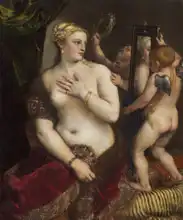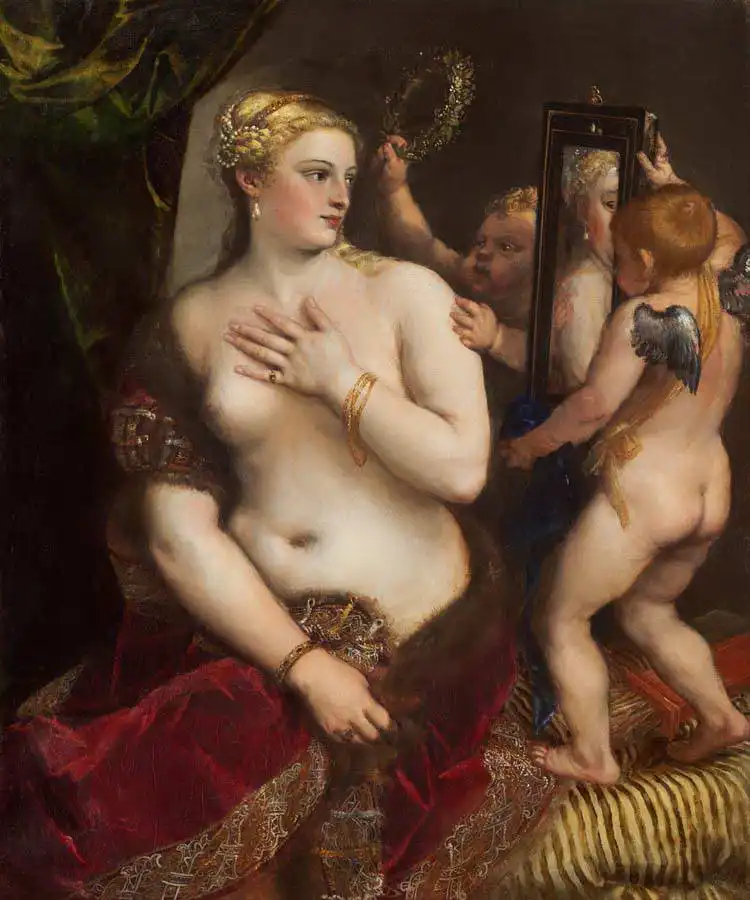About this finishing
Print. The image is printed on the top quality 10-ink HP Z9PS printer on HP matte 270 g / m2 paper. You can choose any size to an accuracy of 1 cm. A margin of 5 cm around the image is added to the size of the motif.


You can find a detailed description about our finishings
here.
Venus with mirror
Date:
1555Medium:
oil on canvasLocation:
National Gallery of Art, Washington DC, USADimensions:
105,5 x 124,5The main motif of
Renaissance art was the revival of the classical past - in Venus with a mirror,
Titian revealed both his admiration for Antiquity and his distinctive modern style. During his time in Rome, he wrote that he was "learning from the marvelous ancient stones" which at that time were daily dug out of the earth. In fact, Titian even based the gesture of his goddess (palm of one hand on the chest and the other hand in the lap) on the famous Roman statue of Venus. Despite being inspired by a historical statue, the painter managed to breathe warmth and life into Venus and thus create an astonishing modern goddess. A beautiful woman staring into a mirror was a popular theme in
Renaissance love poetry, in which poets express their envy of the happy mirror that can hold a woman's gorgeous reflection.
Tizian painted picture Venus with mirror in 1555. Prevailing color of this fine art print is brown and its shape is portrait. Original size is 105,5 x 124,5. This art piece is located in National Gallery of Art, Washington DC, USA. This image is printed on demand - you can choose material, size and finishing.
Full name
Tiziano Vecelli Da Cadore (1485-1576)He came from a family of lawyers and notaries. At nine years of age, he left to study in the contemporary centre of art: Venice. There, he met with not only
Leonardo da Vinci and
Albrecht Dürer. Tizian’s uncle promoted and developed his talent, until one day the young artist was admitted to the workshop of
Giovanni Bellini. His name worked its way into the minds of potential customers. When his master died, he became the main Venetian painter. His customers were Venetian Doges, for whom he not only painted portraits (
Jacopo Strada). Tizian’s paintings have become a symbol of luxury and wealth. After the coronation of Emperor Charles V, he was awarded a knighthood. In 1542, at the request of Pope Paul III, he moved to Rome, where he replaced
Michelangelo. Tizian laid the foundations for the
Renaissance and inspired artists, such as
Rembrandt and
Rubens.

